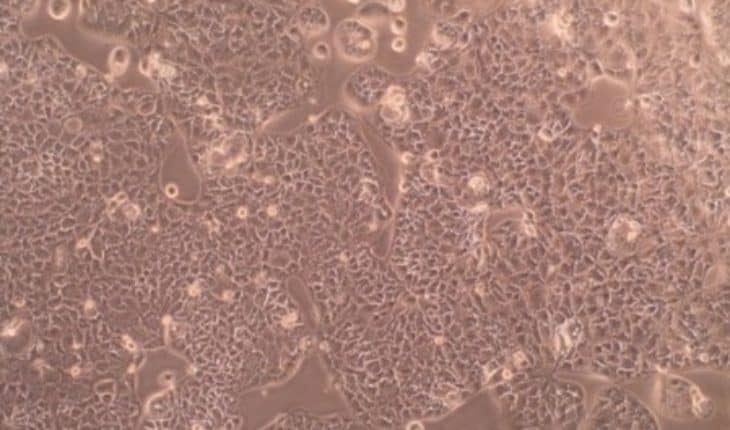Innovative multiple-organ devices for brain diseases – researcher Carmen Giordano has received two further grants totaling €280,000 for her work on the microbiota-gut-brain axis.
They are called DIANA and PEGASO, the mythological ‘children’ of MINERVA (ERC 2016), the two projects, funded respectively under the recent Proof-of-Concept call of the ERC (European Research Council) and the Italian call MIUR FARE, the latter dedicated to the awardees of ERC projects. The two projects will allow Carmen Giordano, associate professor at Politecnico di Milano, to further investigate the set of connections that link the intestinal microflora (gut microbiota) and the functioning of our brain and to develop an innovative multi-organ-on-a-chip technological tool that will study new therapeutic strategies for brain diseases, allowing the increasingly targeted development of new drugs.
A significant increase is expected in the number of patients suffering from brain pathologies such as Alzheimer’s or Parkinson’s disease in the next few decades. One critical point is that the development of new drugs requires a process that lasts 10-15 years overall and investments of about 1-3 billion euros in light of a very high failure rate, which is more than 95% for Alzheimer’s disease alone. The models available for performing biological validation are not adequately predictive of the actual behaviour of the new drugs when administered to patients. Carmen Giordano received two additional grants to work on this aspect, equaling a total of €280,000 for two projects that are an advancement in applying their predecessor MINERVA.
DIANA (Organ-on-a-chip Drug screening device to target brain disease) will develop and validate Chip4D Brain, a state-of-the-art organ-on-a-chip tool that integrates the blood-brain barrier and the brain into a single in vitro system in an industrial setting. It consists of two miniaturised technological devices designed with a cutting-edge technology called ‘organ-on-a-chip’ that allows the reproduction of complex organ functions in systems the size of a microscope slide. This technology allow using DIANA to simulate the blood-brain barrier that protects our brain from molecules and agents outside the brain. Each system houses complex cellular models aimed at reproducing some of the fundamental characteristics of reference systems such as three-dimensionality and the simultaneous presence of different cell types.
DIANA’s mission is broad: this device seeks to be the basis for the development of a new generation of innovative multiple-organ devices as part of the study of new therapeutic strategies for brain diseases. ‘This challenge is as important as it is necessary’, says Carmen Giordano, ‘because with brain diseases the presence of the blood-brain barrier that naturally protects our brain from the uncontrolled entrance of molecules and biological agents, associated with the complexity of the brain tissue, makes the current in vitro models poorly predictive of the drugs’ actual behaviour in the body’.
This is a complicated mission requiring many skills to implement, so a completely new consortium and an ad hoc team was created between the Politecnico di Milano, the institute hosting the project, and Neuro-Zone S.r.l., an industrial partner specialising in the research and development of drugs related to brain diseases.
The PEGASO project aims to develop the first personalised body-on-a-chip platform to collect data useful in selecting the genetic profile of the most suitable patients for clinical trials of new drugs, improving their efficacy, reducing side effects and decreasing the failure rate during clinical trials, providing a significant social and economic benefit. As with the MINERVA project, the platform consists of technological devices of the ‘organ-on-a-chip’ type enhanced by a device that simulates the liver, an essential organ in metabolising drugs, and will host only cellular models obtained from the same patient so as to reproduce that patient’s specific metabolic and genetic characteristics, generating a platform that can be called a ‘patient-on-a- chip’.
The project thus expands MINERVA’s application potential in the field of personalised medicine. Indeed, it stems from the assumption that each patient’s genetic background can influence the individual response to the drug and moderate unwanted side effects. A single variation in a key gene involved in the metabolism of the medicine can influence its efficacy, risking serious side effects for particular groups of patients.
The final goal is the preliminary validation of the PEGASO platform with a drug for Alzheimer’s disease in two clinically relevant scenarios of patients with and without genetic variations known to influence the actual efficacy of the drug in vivo.
For both the projects, the consolidated collaboration with Diego Albani, a neuroscientist with the Mario Negri Pharmacological Research Institute IRCCS of Milan, is essential, in particular because it allow acquiring specific knowledge about the pharmacology of neurodegenerative diseases already enhanced in MINERVA project.
Info: (http://www.minerva.polimi.it/)
The project DIANA has received funding from the European Research Council (ERC) under the EU’s Horizon 2020 research and innovation programme, under Grant Agreement No. 899431.
The project PEGASO is funded by the Italian Ministry of University and Research under the action “FARE Ricerca in Italia: Framework per l’attrazione e il rafforzamento delle eccellenze per la Ricerca in Italia”- second edition, project code R18WWPCXLY.
- Polio conquered by vaccines (1955) - 28th November 2025
- Patients on trolleys in Emergency Department corridors have been forgotten - 28th November 2025
- HPV vaccination reduces pregnancy complications - 28th November 2025







